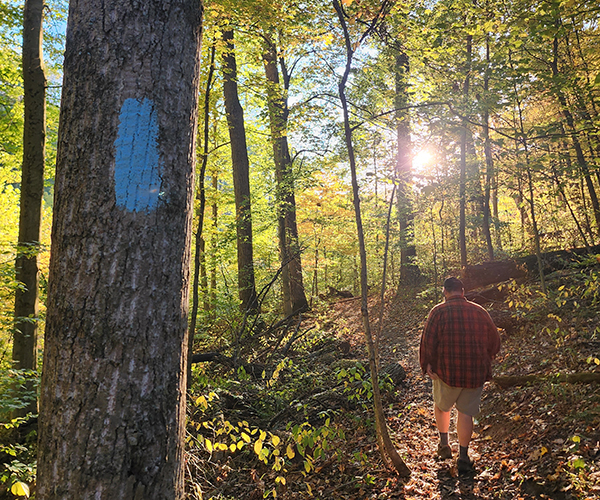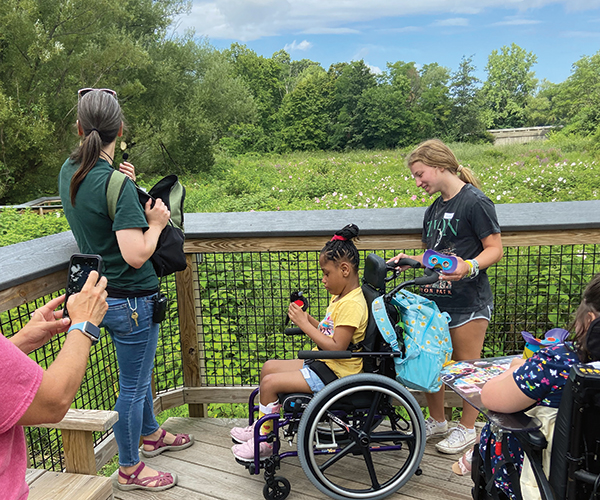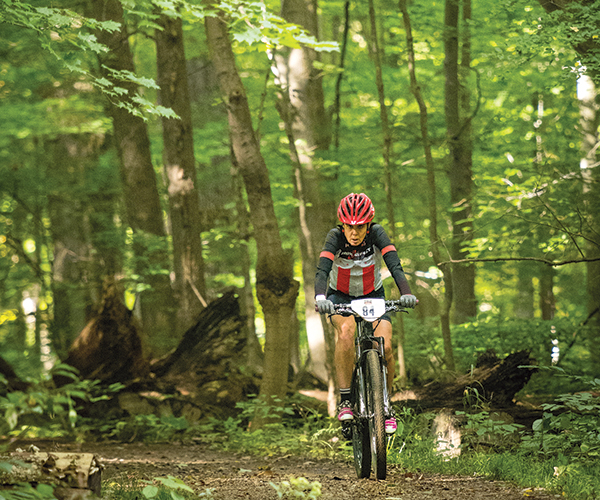Tell a native Charlestonian that you’re planning to visit Drayton Hall and she will probably tell you two things: The first is that it’s the only plantation home on the Ashley River to survive Gen. William T. Sherman’s burning spree completely unscathed. The second is that it’s completely empty.
That last piece of information is usually delivered as a warning, in the same tone one might use to divulge that the place is haunted by vengeful spirits. Even staffers at the 270-year-old Georgian-Palladian residence — still without central heat, electricity and running water — admit that some visitors are horribly disappointed by the National Trust for Historic Preservation’s decision to maintain the house in the same condition in which it was purchased almost 35 years ago. Trust officials believe that alterations would diminish its historical value.
“Normally, when I tell a group this, I see at least one or two faces fall,” guide Leslie Newman says to the tourists seated under a moss-hung oak on the front lawn. “The first time I came here, I thought,How interesting can an empty house be? But by the end of the tour, I was hooked.”
Any doubts I may have harbored about the house’s condition begin to dissipate as soon as Newman leads the way into the robin’s-egg-blue great hall and points out the cast-plaster ceiling, a real work of art punctuated by an enormous medallion and framed by friezes with egg-and-dart molding. The tour moves through the withdrawing room — which contains yet another ornate plaster ceiling and more heavily carved woodwork — into the stair hall with its massive double staircase. By the time the group makes its way through the second-floor ballroom to the portico, I’m hooked, too. The absence of period furniture and art actually endows the house with a sense of timelessness appropriate to a structure that has survived two wars, an 1886 earthquake and several hurricanes.
The property is one of four plantations just outside Charleston, S.C., where history buffs can revisit a way of life that ended with the Civil War. The most famous is arguably Boone Hall Plantation in nearby Mount Pleasant, where portions of the television miniseriesNorth and South and Queen, as well as the movieThe Notebook, were shot. Neighboring Drayton Hall are Magnolia Plantation and Middleton Place.
Seeing them all is a challenge for those on a tight schedule — it can take hours to explore the main house, gardens and outbuildings at any one site. A car is essential, a fact I discovered by not renting one. The few tour companies that offer plantation tours from the city only make afternoon trips to Magnolia Plantation and Middleton Place. (Just as the desire to see Drayton Hall often dims when people find out it is unfurnished, interest in Boone Hall frequently wanes when they learn the house is a colonial revival built in the 1930s, according to Terry Leff, destination planner for Charleston Tours.) And while the distances between Drayton Hall, Magnolia Plantation and Middleton Place aren’t that great — less than a mile, not including the very long driveways — the lack of sidewalks on busy Ashley River Road makes walking between them downright dangerous.
I choose to spend my afternoon at Magnolia Plantation, primarily because of the main house’s history. When Union forces burned the dwelling in 1865, the Rev. John Grimke Drayton, its owner, disassembled his modest summer cottage 14 miles upriver, shipped it by barge to the plantation, and mounted it on the ground-floor walls of its predecessor. His daughter Julia added a water tower and two-story addition a few years later, transforming the cottage into a striking Victorian mansion.
But the gardens behind the house are Magnolia’s real draw. Flowerdale, a formal English garden planted in the 1680s, has been expanded into a series of green attractions, including a copy of the horticultural maze designed by Henry VIII for his country estate, Hampton Court; an herb garden traditionally planted in the framework of an 18th-century boxwood knot garden; and a white bridge with latticed railings that is stunningly reflected in the quiet pond it spans. While Drayton Hall may be an architectural treasure trove, Magnolia’s gardens are a true paradise on Earth.
That last piece of information is usually delivered as a warning, in the same tone one might use to divulge that the place is haunted by vengeful spirits. Even staffers at the 270-year-old Georgian-Palladian residence — still without central heat, electricity and running water — admit that some visitors are horribly disappointed by the National Trust for Historic Preservation’s decision to maintain the house in the same condition in which it was purchased almost 35 years ago. Trust officials believe that alterations would diminish its historical value.
“Normally, when I tell a group this, I see at least one or two faces fall,” guide Leslie Newman says to the tourists seated under a moss-hung oak on the front lawn. “The first time I came here, I thought,How interesting can an empty house be? But by the end of the tour, I was hooked.”
Any doubts I may have harbored about the house’s condition begin to dissipate as soon as Newman leads the way into the robin’s-egg-blue great hall and points out the cast-plaster ceiling, a real work of art punctuated by an enormous medallion and framed by friezes with egg-and-dart molding. The tour moves through the withdrawing room — which contains yet another ornate plaster ceiling and more heavily carved woodwork — into the stair hall with its massive double staircase. By the time the group makes its way through the second-floor ballroom to the portico, I’m hooked, too. The absence of period furniture and art actually endows the house with a sense of timelessness appropriate to a structure that has survived two wars, an 1886 earthquake and several hurricanes.
The property is one of four plantations just outside Charleston, S.C., where history buffs can revisit a way of life that ended with the Civil War. The most famous is arguably Boone Hall Plantation in nearby Mount Pleasant, where portions of the television miniseriesNorth and South and Queen, as well as the movieThe Notebook, were shot. Neighboring Drayton Hall are Magnolia Plantation and Middleton Place.
Seeing them all is a challenge for those on a tight schedule — it can take hours to explore the main house, gardens and outbuildings at any one site. A car is essential, a fact I discovered by not renting one. The few tour companies that offer plantation tours from the city only make afternoon trips to Magnolia Plantation and Middleton Place. (Just as the desire to see Drayton Hall often dims when people find out it is unfurnished, interest in Boone Hall frequently wanes when they learn the house is a colonial revival built in the 1930s, according to Terry Leff, destination planner for Charleston Tours.) And while the distances between Drayton Hall, Magnolia Plantation and Middleton Place aren’t that great — less than a mile, not including the very long driveways — the lack of sidewalks on busy Ashley River Road makes walking between them downright dangerous.
I choose to spend my afternoon at Magnolia Plantation, primarily because of the main house’s history. When Union forces burned the dwelling in 1865, the Rev. John Grimke Drayton, its owner, disassembled his modest summer cottage 14 miles upriver, shipped it by barge to the plantation, and mounted it on the ground-floor walls of its predecessor. His daughter Julia added a water tower and two-story addition a few years later, transforming the cottage into a striking Victorian mansion.
But the gardens behind the house are Magnolia’s real draw. Flowerdale, a formal English garden planted in the 1680s, has been expanded into a series of green attractions, including a copy of the horticultural maze designed by Henry VIII for his country estate, Hampton Court; an herb garden traditionally planted in the framework of an 18th-century boxwood knot garden; and a white bridge with latticed railings that is stunningly reflected in the quiet pond it spans. While Drayton Hall may be an architectural treasure trove, Magnolia’s gardens are a true paradise on Earth.
[ If you Go ]
Get There: Continental Airlines is offering direct service from Cleveland to Charleston through Sept. 2. For fares, call 1-800-523-3273 or go to continental.com.
Stay There: Although the plantations are located a half hour from downtown Charleston, the best place to stay is the city’s well-preserved historic district, within walking distance of great restaurants and fabulous King Street shopping.
> The Mills House Hotel, a gorgeous pink palace located in the heart of Charleston’s Museum Mile, has hosted everyone from Confederate Gen. Robert E. Lee to Sen. John McCain. The courtyard, with its beautiful fountain, is one of the best places in the city to sip a cold drink. 115 Meeting St., Charleston, (843) 577-2400; millshouse.com
> Wentworth Mansion is for those who want to stay in a grand home instead of just look at one. A wealthy cotton merchant built the 21-room house in 1886 as a residence for his wife and 13 children. Amenities include ridiculously large rooms with gas fireplaces, whirlpool soaking tubs and 24-hour concierge service. The carriage house holds a spa and restaurant. 149 Wentworth St., Charleston, 1-888-466-1886, wentworthmansion.com
Get There: Continental Airlines is offering direct service from Cleveland to Charleston through Sept. 2. For fares, call 1-800-523-3273 or go to continental.com.
Stay There: Although the plantations are located a half hour from downtown Charleston, the best place to stay is the city’s well-preserved historic district, within walking distance of great restaurants and fabulous King Street shopping.
> The Mills House Hotel, a gorgeous pink palace located in the heart of Charleston’s Museum Mile, has hosted everyone from Confederate Gen. Robert E. Lee to Sen. John McCain. The courtyard, with its beautiful fountain, is one of the best places in the city to sip a cold drink. 115 Meeting St., Charleston, (843) 577-2400; millshouse.com
> Wentworth Mansion is for those who want to stay in a grand home instead of just look at one. A wealthy cotton merchant built the 21-room house in 1886 as a residence for his wife and 13 children. Amenities include ridiculously large rooms with gas fireplaces, whirlpool soaking tubs and 24-hour concierge service. The carriage house holds a spa and restaurant. 149 Wentworth St., Charleston, 1-888-466-1886, wentworthmansion.com



